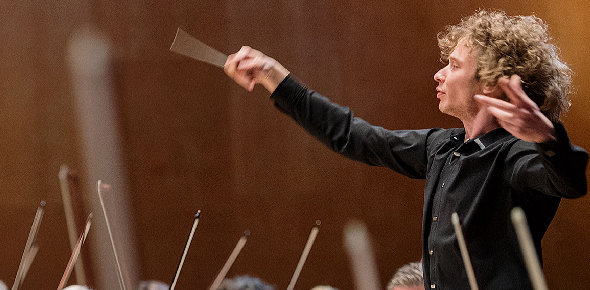To be very honest with you, orchestras can be conducted without a conductorif the members are disciplined enough and are adept at teamwork. Most of a conductor’s work is behind the scenes.
The conductor is responsible for orchestrating the musical piece they’re going to play. The pun aside, the conductor decides the number of members that will perform in the orchestra and who the soloist will be.
Soloist (In Blue)
_2.png)
It is a well-known fact that the music you hear in an orchestra is not through the composer’s mind who created it but through the interpretation of the conductor who studied it. The conductor has a definite impact on the piece and it’s often easy to spot it.
Pierre Boulez (most influential conductor of the 20th century)
_5.png)
The conductor creates the chord books for the respective musicians of the orchestra and conducts singular and collective rehearsals for the performance. The conductor is mostly one of the senior most members on the team for a simple reason. An orchestral work requires a gazillion hours of dedication and study. It often takes months to orchestrate half an hour of music.
Many people say that the conductor is unnecessary on stage and having him wave his hands is just a glorified thank you for his work behind the scenes, but that is a gross understatement. An orchestra is generally comprised of at least 50 musicians seated around a large auditorium and their notes can go out of tune due to the delays in sound propagation, especially between the violin and timpani. A good performance is ruined by a mistimed timpani.
The conductor acts a focal point for the whole band and they follow his lead. No matter how good a musician is, the pressure can make him forget count of the notes and lose his way but by following the conductor he can reduce the chances of such a thing happening. The gestures conductors use are choreographed during rehearsaland help a lot on the stage.




